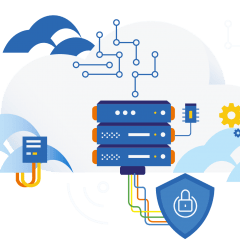

In the ever-evolving landscape of cyber risks and threats, understanding the different types of risks can feel like navigating a zoo of exotic and unpredictable creatures. Each type of risk—be it a Black Swan, Grey Rhino, White Elephant, or Black Jellyfish—carries unique characteristics and challenges. By exploring these categories, we can better prepare for and mitigate the impact of cyber threats in our increasingly digital world.
1. Black Swan: The Unpredictable Threat
Definition: A Black Swan event is an unpredictable and rare occurrence with severe consequences. These events are beyond the realm of regular expectations and are extremely difficult to predict.
Origin: The term “Black Swan” was popularized by Nassim Nicholas Taleb in his 2007 book “The Black Swan: The Impact of the Highly Improbable.”
Examples:
-
WannaCry Ransomware Attack (2017): This ransomware attack exploited a vulnerability in Windows operating systems and spread rapidly across the globe, causing widespread disruption. Despite the presence of vulnerabilities in systems, the sheer scale and speed of the WannaCry attack caught organizations off guard. It highlighted the importance of patch management and the need for robust cybersecurity measures.
-
SolarWinds Hack (2020): The SolarWinds cyberattack involved the insertion of a vulnerability into the SolarWinds Orion software, which was then distributed to thousands of organizations, including U.S. government agencies and large corporations. The stealth and sophistication of this attack, which went undetected for months, made it a quintessential Black Swan event. It underscored the necessity for advanced threat detection and incident response capabilities.
Reason: These events were unforeseen and had a significant impact on global cybersecurity, prompting organizations to rethink their security strategies and preparedness for unexpected threats.
2. Grey Rhino: The Highly Probable Yet Neglected Risk
Definition: A Grey Rhino is a highly probable, high-impact yet neglected threat. Unlike Black Swans, these risks are often visible and understood but are not adequately addressed.
Origin: The term “Grey Rhino” was coined by Michele Wucker in her 2016 book “The Gray Rhino: How to Recognize and Act on the Obvious Dangers We Ignore.”
Examples:
-
Equifax Data Breach (2017): Despite being aware of vulnerabilities, Equifax failed to take necessary actions, leading to the exposure of sensitive information of over 147 million people. Complacency and a lack of timely action contributed to this breach. Organizations must prioritize cybersecurity and regularly update their systems to prevent such avoidable disasters.
-
Capital One Data Breach (2019): This breach exposed the personal information of over 100 million customers. The company had ignored warnings about vulnerabilities in its system, leading to a significant data breach. This incident highlights the need for continuous security assessments and proactive measures to mitigate known risks.
Reason: These breaches were foreseeable and preventable but were not adequately addressed due to organizational complacency or resource allocation issues.
3. White Elephant: The Costly but Underutilized Asset
Definition: A White Elephant refers to an investment that is costly to maintain and has limited use or benefit.
Origin: The term “White Elephant” has historical roots, referring to the practice in Southeast Asia where rare albino elephants were considered sacred but were costly to maintain.
Examples:
-
Legacy Systems in Healthcare: Many healthcare organizations continue to rely on outdated legacy systems that are expensive to maintain and vulnerable to cyber threats. These systems often lack modern security features, making them prime targets for cyberattacks and cyber risks.
-
Outdated Industrial Control Systems (ICS): Many industrial sectors use outdated ICS, which are expensive to maintain and upgrade. These systems are increasingly becoming targets for cyberattacks, as seen in the Triton malware attack on a petrochemical plant in 2017. Upgrading these systems to modern, secure alternatives is essential for reducing risk.
Reason: Clinging to outdated technology can hinder an organization’s ability to implement effective cybersecurity measures. It is essential to assess the cost-benefit ratio of maintaining legacy systems versus upgrading to more secure solutions.
4. Black Jellyfish: The Slow-Moving but Insidious Threat
Definition: A Black Jellyfish is a slow-moving, insidious threat that can cause significant harm over time. These risks often go unnoticed until they have caused considerable damage.
Origin: The concept of “Black Jellyfish” as a risk category is less established in the literature compared to the others but is used to describe insidious, creeping threats that are hard to detect and mitigate.
Examples:
-
Advanced Persistent Threats (APTs): APTs are prolonged and targeted cyberattacks where an intruder remains undetected within a system for an extended period. For example, the APT29 group, also known as Cozy Bear, has been linked to numerous cyber espionage activities targeting governmental and commercial entities over several years.
-
Insider Threats: Employees with malicious intent or those who unintentionally compromise security can pose significant risks over time. The Edward Snowden incident in 2013, where a government contractor leaked classified information, is a prime example of an insider threat causing long-term damage.
Reason: APTs and insider threats highlight the need for continuous monitoring and sophisticated threat detection mechanisms. Organizations must adopt advanced cybersecurity tools to identify and neutralize these stealthy threats before they cause significant damage.
Conclusion
Understanding the zoo of cyber risks in the cyber realm is crucial for developing robust defense strategies. While Black Swans remind us of the importance of preparedness for the unknown, Grey Rhinos emphasize the need for proactive measures against foreseeable threats. White Elephants urge us to reconsider the value of outdated assets, and Black Jellyfish highlights the danger of slow-moving, insidious threats. By recognizing and addressing these diverse cyber risks, organizations can better protect themselves in the complex world of cybersecurity and cyber risks.














Recent Comments